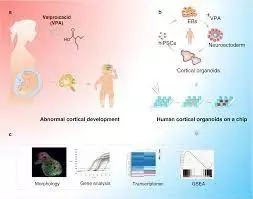- Home
- Medical news & Guidelines
- Anesthesiology
- Cardiology and CTVS
- Critical Care
- Dentistry
- Dermatology
- Diabetes and Endocrinology
- ENT
- Gastroenterology
- Medicine
- Nephrology
- Neurology
- Obstretics-Gynaecology
- Oncology
- Ophthalmology
- Orthopaedics
- Pediatrics-Neonatology
- Psychiatry
- Pulmonology
- Radiology
- Surgery
- Urology
- Laboratory Medicine
- Diet
- Nursing
- Paramedical
- Physiotherapy
- Health news
- Fact Check
- Bone Health Fact Check
- Brain Health Fact Check
- Cancer Related Fact Check
- Child Care Fact Check
- Dental and oral health fact check
- Diabetes and metabolic health fact check
- Diet and Nutrition Fact Check
- Eye and ENT Care Fact Check
- Fitness fact check
- Gut health fact check
- Heart health fact check
- Kidney health fact check
- Medical education fact check
- Men's health fact check
- Respiratory fact check
- Skin and hair care fact check
- Vaccine and Immunization fact check
- Women's health fact check
- AYUSH
- State News
- Andaman and Nicobar Islands
- Andhra Pradesh
- Arunachal Pradesh
- Assam
- Bihar
- Chandigarh
- Chattisgarh
- Dadra and Nagar Haveli
- Daman and Diu
- Delhi
- Goa
- Gujarat
- Haryana
- Himachal Pradesh
- Jammu & Kashmir
- Jharkhand
- Karnataka
- Kerala
- Ladakh
- Lakshadweep
- Madhya Pradesh
- Maharashtra
- Manipur
- Meghalaya
- Mizoram
- Nagaland
- Odisha
- Puducherry
- Punjab
- Rajasthan
- Sikkim
- Tamil Nadu
- Telangana
- Tripura
- Uttar Pradesh
- Uttrakhand
- West Bengal
- Medical Education
- Industry
JAMA study suggests mitigation of prenatal exposure to valproic acid, for indications where risk outweighs benefit

JAMA study suggests mitigation of prenatal exposure to valproic acid, for indications where risk outweighs benefits.
Teratogenic outcomes associated with valproic acid use represent a substantial concern for persons of childbearing age. Regulatory agencies worldwide have enhanced warnings or implemented risk minimization programs to reduce exposure during pregnancy. A study was done to determine pregnancy rates during valproic acid use and concomitant contraception use across indications. This retrospective cohort study used data from the Merative MarketScan commercial claims databases from January 1, 2005, to December 31, 2020, to identify female patients aged 12 to 44 years who initiated valproic acid treatment and had continuous insurance enrollment 6 months before initiation and 9 months after treatment end. A treatment episode included consecutive prescription fills that occurred within 7 days from the end of the days’ supply of the previous dispensing. Data were analyzed from March 1 to September 10, 2023. Treatment episodes were categorized by inferred indication using diagnoses preceding treatment initiation, including epilepsy, migraine or headache, mood disorders, and unknown or off-label uses.
Pregnancy incidence rate ratios (IRRs) were calculated and were adjusted for age and calendar year. Contraceptive use (prescription contraceptives, intrauterine devices, and implants) during treatment was examined. Results The cohort included 165 772 valproic acid treatment episodes among 69 390 women (mean [SD] age, 29.8 [10.0] years). Mood disorders (42.5%) were the most common indication, followed by migraine or headache (20.1%), with epilepsy playing a minor role (14.9%). Pregnancy incidence rates during valproic acid use remained unchanged, with a rate of 1.74 (95% CI, 1.14-2.53) per 100 person-years in 2005 and a rate of 1.90 (95% CI, 1.16-3.12) per 100 person-years in 2019. Compared with epilepsy, pregnancy rates were more than double for mood disorder (IRR, 2.16 [95% CI, 1.93-2.42]) and migraine or headache (IRR, 2.01 [95% CI, 1.92-2.09]).
Few treatment episodes coincided with contraceptive use (37 012 [22.3%]), and oral dosage forms were the most common (27 069 [73.1%]). In this cohort study of patients of childbearing age who used valproic acid, pregnancy rates during valproic acid use did not decrease despite enhanced US Food and Drug Administration safety communications, and contraception use remained low. Patients with migraine and mood disorders accounted for the largest proportion of valproic acid use and had the highest pregnancy rates, while patients with epilepsy had the lowest. These findings suggest a need to enhance efforts to mitigate prenatal exposure to valproic acid, especially for indications where the risk of use during pregnancy outweighs the benefit.
Reference:
Smolinski NE, Sarayani A, Thai TN, Jugl S, Ewig CLY, Winterstein AG. Prenatal Exposure to Valproic Acid Across Various Indications for Use. JAMA Netw Open. 2024;7(5):e2412680. doi:10.1001/jamanetworkopen.2024.12680
Dr. Shravani Dali has completed her BDS from Pravara institute of medical sciences, loni. Following which she extensively worked in the healthcare sector for 2+ years. She has been actively involved in writing blogs in field of health and wellness. Currently she is pursuing her Masters of public health-health administration from Tata institute of social sciences. She can be contacted at editorial@medicaldialogues.in.
Dr Kamal Kant Kohli-MBBS, DTCD- a chest specialist with more than 30 years of practice and a flair for writing clinical articles, Dr Kamal Kant Kohli joined Medical Dialogues as a Chief Editor of Medical News. Besides writing articles, as an editor, he proofreads and verifies all the medical content published on Medical Dialogues including those coming from journals, studies,medical conferences,guidelines etc. Email: drkohli@medicaldialogues.in. Contact no. 011-43720751


